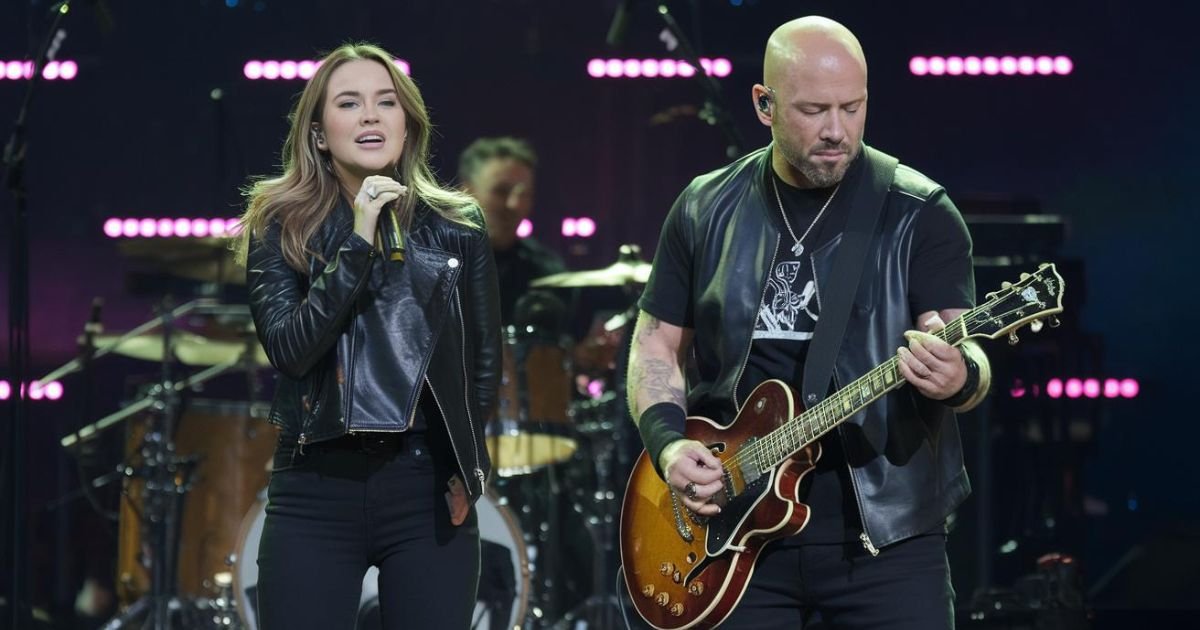In the ever-evolving world of rock music, few artists have successfully blended genres to redefine the soundscape like Emily Armstrong and Linkin Park. Both are known for pushing the boundaries of traditional rock by integrating elements of punk, alternative, and electronic music. This genre fusion has allowed them to stand out in a crowded industry, reaching fans across diverse musical preferences. Let’s explore how these two forces have innovated rock music by breaking down musical conventions and creating a sound that transcends labels.
The Rise of Emily Armstrong: A Genre-Defying Artist
Emily Armstrong, the powerhouse vocalist of the Los Angeles-based rock band Dead Sara, has earned a reputation for her bold approach to music. Known for her raw, emotive voice and fearless stage presence, Armstrong has continually refused to confine herself to a single genre. Much like Linkin Park, her ability to fuse multiple influences, including punk, alternative, and even blues, has made her a standout in the rock world.

One of the key factors in Armstrong’s success is her willingness to blend sounds that traditionally don’t belong together. Dead Sara’s music often combines the grit and attitude of punk with the emotional depth of alternative rock. For instance, their hit single “Weatherman” showcases Armstrong’s ability to transition from a soft, melodic tone to raw, high-energy screams, all within the same song. This dynamic sound has been a hallmark of her career, resonating with listeners who appreciate the emotional range that comes with genre-blending.
Linkin Park’s Legacy of Experimentation
Linkin Park, one of the most iconic rock bands of the 2000s, carved out a unique space in the music world by pioneering a sound that fused rock with elements of hip-hop, electronic, and alternative music. From their groundbreaking debut album Hybrid Theory to their experimental A Thousand Suns, the band continually redefined what modern rock could be.
The band’s success in blending genres was largely due to the diverse musical backgrounds of its members. Mike Shinoda’s expertise in hip-hop and electronic music paired with Chester Bennington’s raw, emotionally charged vocals allowed Linkin Park to create a sound that was as heavy as it was melodic. Their genre-blending reached new heights with songs like “In the End,” which seamlessly merged rap verses with soaring rock choruses.
The Importance of Genre-Blending in Modern Rock
Genre-blending isn’t just a trend in rock music; it’s a way for artists to express themselves more freely and reach broader audiences. For both Emily Armstrong and Linkin Park, fusing different styles has allowed them to create something fresh and innovative. But it’s not just about the novelty—genre-blending in rock offers a deeper level of emotional connection for listeners. By pulling from various musical influences, artists can craft songs that resonate with people on multiple levels.
For example, Linkin Park’s Minutes to Midnight featured tracks like “Bleed It Out” and “Shadow of the Day,” which demonstrated a shift from their signature nu-metal sound to a more experimental blend of rock, pop, and electronic elements. This evolution not only kept the band’s sound fresh but also attracted new listeners who may not have been fans of their earlier work.
Similarly, Emily Armstrong’s fearless exploration of different sounds has earned her a loyal fan base. Her ability to shift between aggressive punk rock anthems and softer, more introspective ballads highlights her versatility as an artist. Fans of traditional rock may be drawn to her gritty vocals and hard-hitting guitar riffs, while fans of alternative and electronic music appreciate the depth and emotion she brings to each song.
Key Songs That Showcase Genre Fusion

To truly understand how both Emily Armstrong and Linkin Park excel at blending genres, it’s essential to examine a few key songs where this fusion is most apparent.
1. Dead Sara – “Weatherman”
This track is a prime example of Emily Armstrong’s genre-blending prowess. “Weatherman” features aggressive punk-inspired guitar riffs combined with alternative rock melodies. Armstrong’s vocals shift from a raspy growl to a soulful, almost blues-like delivery. The song’s unpredictable structure and dynamic range make it a perfect example of how Armstrong refuses to be confined to a single genre.
2. Linkin Park – “Numb”
“Numb,” from Linkin Park’s Meteora album, is a quintessential example of the band’s ability to blend electronic and alternative rock elements. The electronic beats create a haunting backdrop for Chester Bennington’s powerful, emotional vocals. The track became an anthem for fans who connected deeply with its themes of alienation and personal struggle, showcasing how genre-blending can enhance a song’s emotional impact.
3. Dead Sara – “Lemon Scent”
Another standout from Dead Sara’s self-titled debut album, “Lemon Scent” blends elements of grunge, punk, and alternative rock. The song’s heavy guitar riffs and driving rhythm are complemented by Armstrong’s fierce vocal delivery. The track’s unpredictable structure and blend of genres make it a fan favorite and a prime example of the band’s unique sound.
4. Linkin Park – “A Light That Never Comes” (with Steve Aoki)
In this collaboration with electronic music producer Steve Aoki, Linkin Park pushes the boundaries of genre even further. The song is a fusion of electronic dance music (EDM) and rock, blending Aoki’s synth-heavy beats with Mike Shinoda’s rap verses and Chester Bennington’s rock vocals. It’s a bold experiment that shows the band’s willingness to embrace new sounds while staying true to their roots.
The Evolution of Rock: What’s Next for Genre-Blending?
Both Emily Armstrong and Linkin Park have demonstrated that genre-blending is not only a creative tool but also a way to keep rock music relevant in an ever-changing musical landscape. As the lines between genres continue to blur, the future of rock music seems destined for even more experimentation and innovation.
The rise of streaming platforms has also made it easier for artists to explore different sounds without the pressure of fitting into a specific genre. Today’s listeners are more open to hybrid music styles, allowing artists like Armstrong to thrive. Similarly, Linkin Park’s continued success, even after the tragic loss of Chester Bennington, shows that fans are eager to embrace music that defies traditional categorization.
Conclusion: Pioneers in Genre Fusion
In the world of rock, Emily Armstrong and Linkin Park stand out as pioneers of genre-blending. Their ability to seamlessly integrate elements of punk, alternative, and electronic music into their work has not only set them apart but also influenced the broader music industry. As fans continue to crave fresh, innovative sounds, it’s clear that the legacy of genre fusion will endure.
Whether it’s the raw power of Dead Sara’s “Weatherman” or the genre-defying collaboration between Linkin Park and Steve Aoki, both Armstrong and Linkin Park have proven that blending genres can create something truly unique and unforgettable. Their willingness to push boundaries has made them icons in modern rock and will continue to inspire future generations of musicians.
